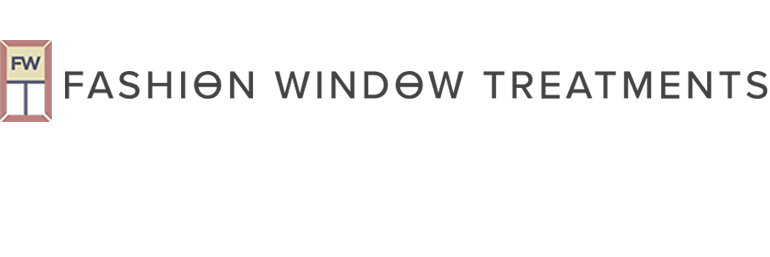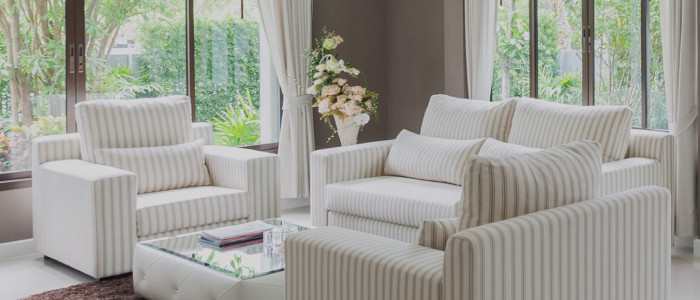Whether you are bedspread kind of person or a comforter or possibly duvet kind of person we have you covered when it comes to custom made bedding. And since we know that not all mattresses and box springs are the same size in height, we know that everyone needs a different size for their custom bedding. Continue reading…
Decorative Trimmings
Decorative trims and tassels are a popular addition to many of today’s window treatments and accessories. We offer several different types of trims, fringes and tassels that can be incorporated onto many of the pillows, table decor and window treatments we fabricate.
Self, Contrast Cording, or Welt
When a product description states that it has self cording or contrast cording (also known as a welt) it simply means that we have taken a standard ¼” cotton cord and have covered the cord in a fabric and have sewn the fabric onto the cord.
Self cording means that we use the Continue reading…
Determining Size for Header and Rod Pocket
When ordering rod pocket curtains you will need to decide on the size you want for the header and rod pocket. The rod pocket size should be made so that when you put your rod into the pocket the panel is fairly snug fitting.
You definitely do not want to use a standard 1” rod with a 3” rod pocket, the curtain will not stay shirred properly and will look flat.
A 1 ½” rod pocket should be used on a standard 1” curtain rod or with a decorative rod 13/16” diameter or smaller.
A 3” rod pocket should be used on a standard 2 ½” continental or dauphine rod or on a decorative rod 1 3/8” – 1 ½ ” diameter.
We suggest using a 3” rod pocket when you have full length drapes and have no intention of using a valance over your curtain panels and use a 1 ½” rod pocket when you intend on using a top treatment over your drapes.
The header size is usually determined if you are intending is using a top treatment or not. If using a top treatment we suggest ordering panels with out a header. If the panels are to stand alone panels then the header size can range from no header (for a more contemporary look) to either a 1” or 2” header based on personal preference.
The header is the ruffling part of the panel that sits above the rod.
How to Measure for your Board Mounted Valance
Measuring for your board mounted valance is quite easy. First you need to determine if you are planning on hanging panels underneath the treatment.
If no panels are to be hung then you need to measure from point A to point B. Point A is where you want the valance to start and point B is where you want the valance to stop. That’s it – you’re done.
When no panels are to be hung under the valance, it is best to have the valance look form fitted, about an 1” wider than the actual window or window molding (if you have molding).
If you do plan on having panels under your valance, you will need to decide if you want the drapes to hang in front of your window or stacked off the window.
If you choose to stack the drapes off the window and you have the wall space to do it, then you will need to order the board mounted valance wider to accommodate the drape width.
This will give of course make your window appear wider than it really is, which many people like to do. A standard 50” wide rod pocket panel when dressed in at about 2-2 ½ times fullness will take up 20-24” of wall space for each panel.
Keep in mind you will want to start the panel at the windows edge (not the molding edge). So if your molding is 3” in width and panel will take up let’s say 22” less 3” (molding) = 19” additional width on each side in order to stack the panel off your window.
When hanging drapes under a board mounted treatment you should order a 5 ½” projection so that you have enough clearance to mount the valance over the drapes. If no drapes are to be hung, then a standard 3 ½” projection will suffice.
Stationary Panels
Stationary panels are used for decorative purposes only meaning they are not meant to open and close. Stationary drapery panels are typically hung on each side of a window or can also be hung in between fairly close multiple windows on a wall. Their main purpose is to add color, texture and warmth (not to be mistaken for warmth as in temperature) to rooms that would otherwise look boring, cold and bland.
Contrast or Self Lining
A contrast lining is when a drapery fabric is used in place of a standard white or ivory drapery lining to line all or part of a window treatment, typically a valance or top treatment.
Contrast lining is a complementary fabric to the main face fabric, whereas self lining means you use the same fabric as the main face fabric for the lining as well.
It is used to enhance the appearance and give a custom look to the window treatment that would otherwise allow the standard drapery lining to show, thus inhibiting the appearance.
Dust Ruffle Styles and Options
Dust ruffle or bed skirt, whichever you call it, can be fabricated in either a tailored style or gathered style.
Most customers will choose a gathered style when they are using ruffled pillow shams on their bed and a tailored style dust ruffle when they are using flanged pillow shams.
Dust ruffles are a necessary accessory when you are using a comforter, duvet cover or a coverlet (unless you have a platform bed). We can fabricate dust ruffles any drop height you need for your bed situation.
We also give you the option of lining the bed skirt for additional body and fullness. Split corners are standard with either style.
Dust Ruffle Drop Heights
There is no such thing as a standard height box spring anymore. You have low profile box springs and high profile box springs. You also have different heights on the frame that the box spring will preside. What all this boils down to is that standard ready made dust ruffles just don’t quite do the job anymore. A “drop” is the measurement from the top of your box spring to where you want it to hang (typically right at your floor).

We have fabricated dust ruffles from 8” long drop up to 26” long drop. Everyone has a different situation with their bedding and require a different drop length on their dust ruffle. We can fabricate a dust ruffle in any drop height you may need…just give us a call!
Decorative Swag Pelmets
A swag pelmet is a decorative accent piece that we fabricate in the same fabrics as your jabots. Pelmets come in many different styles and sizes, however, we fabricate ours in a pleated fashion to coordinate with our pleated jabots.
Most people who use pelmets with swag and jabots are after a more formal appearance for their room. Pelmets are used typically wherever two swags meet and don’t overlap and can be used on top of or underneath the swags.



